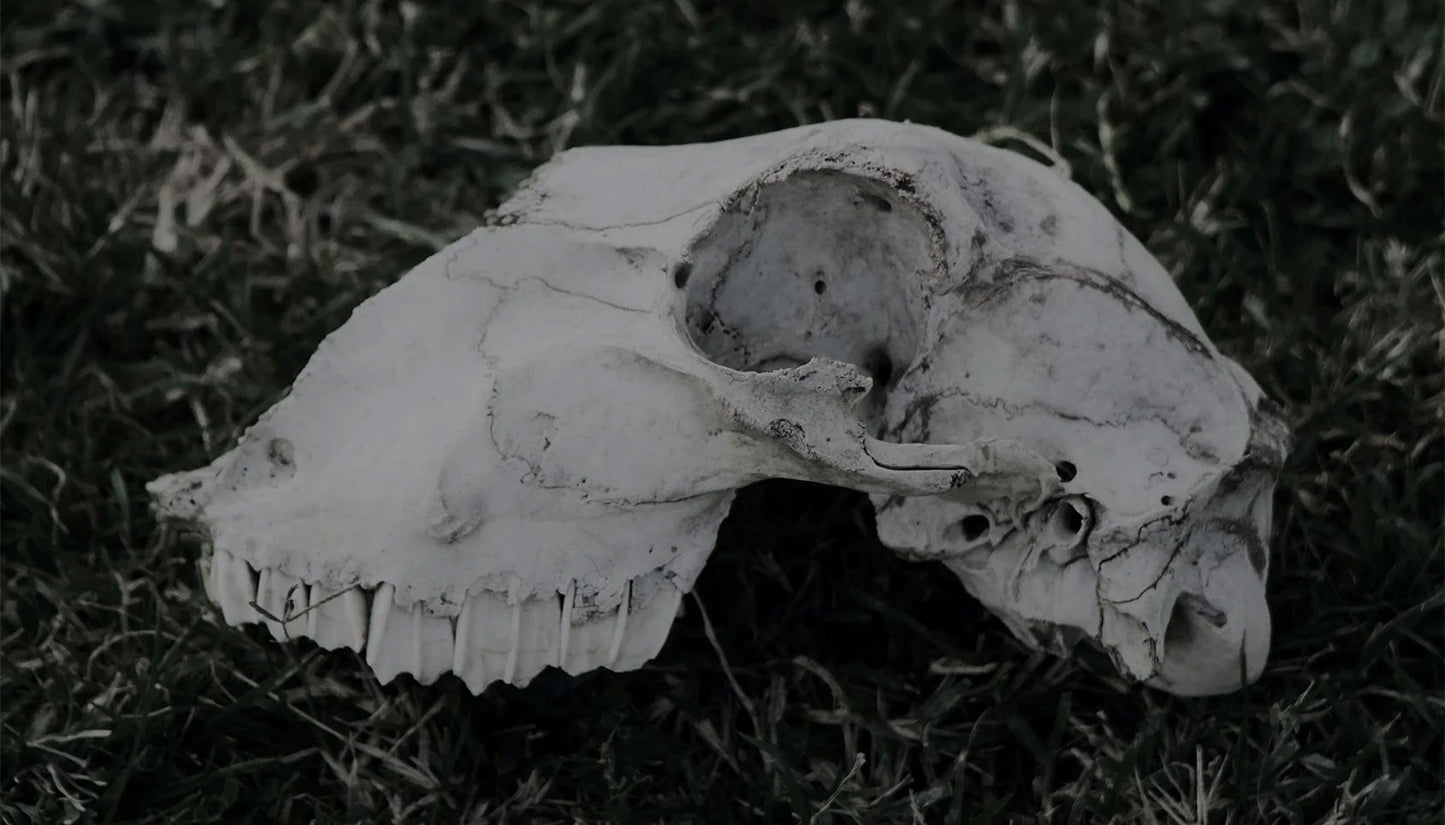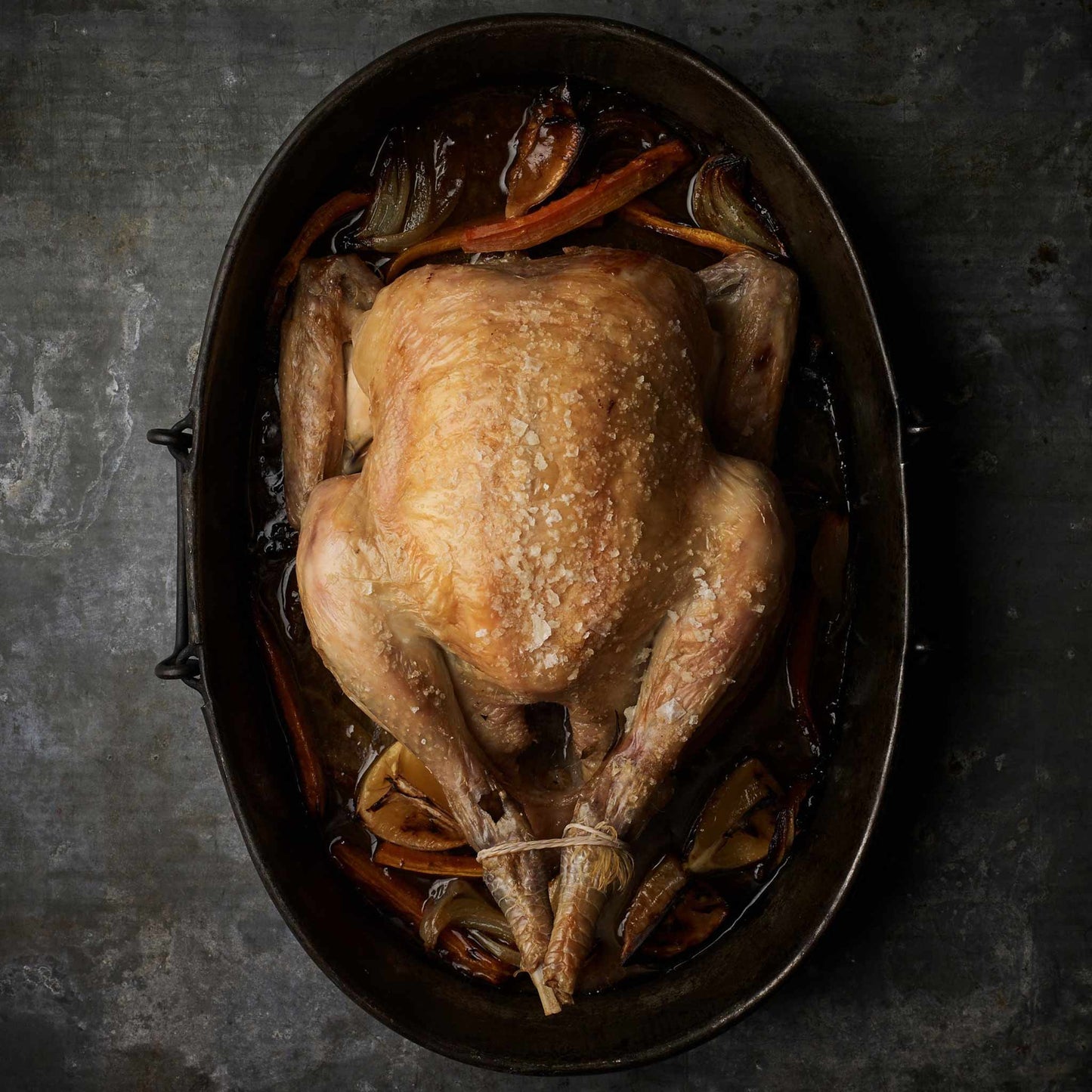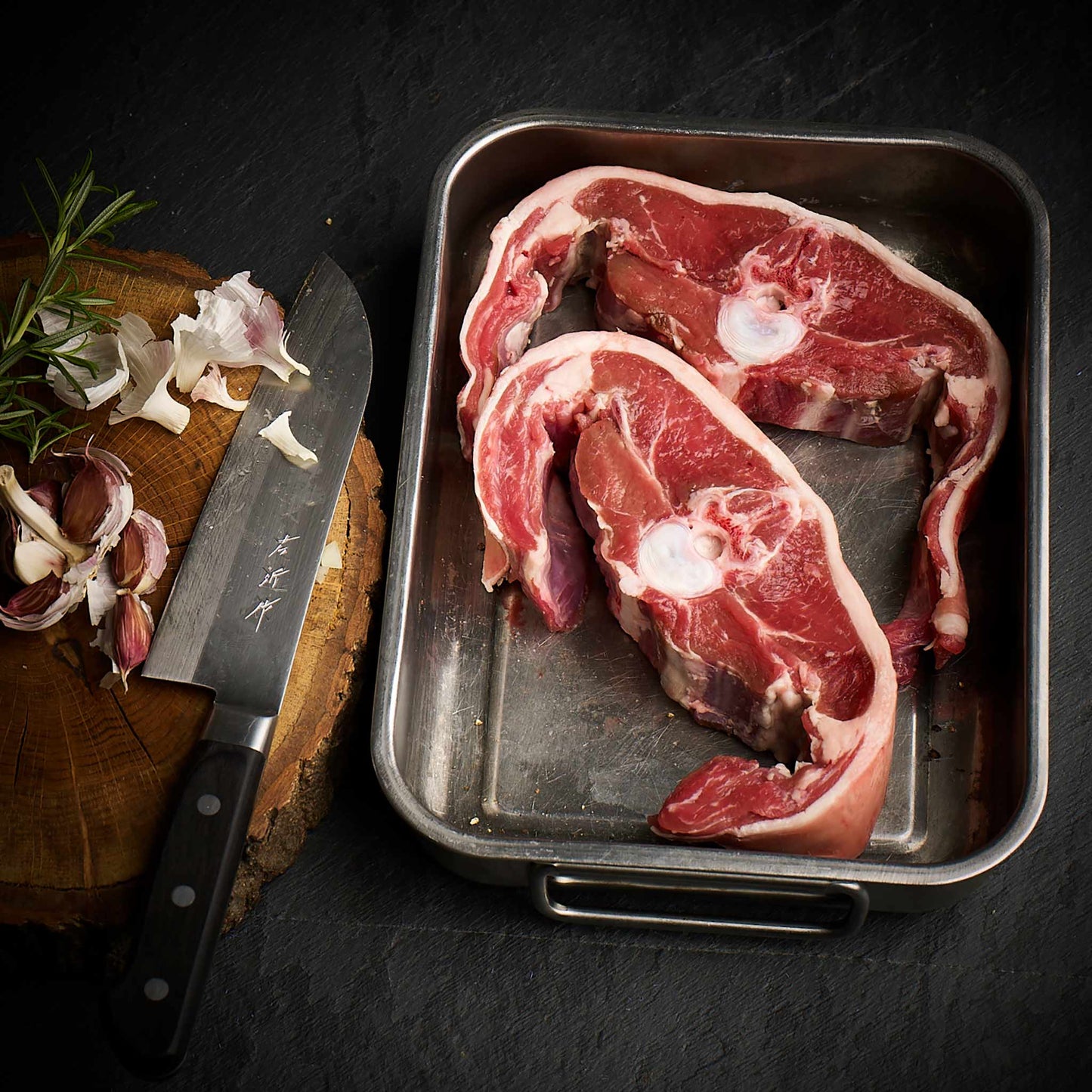We source our chicken from one farm in Leicestershire. The farm is Pasture for Life certified and rears truly free range, outdoor birds.

All the elements that make up nutrients in our food are just borrowed. Nutrients are recycled throughout nature, throughout millennia. This is the essence of life, a beautifully complex, self-organising combination of elements that come from stardust and will eventually return to the cosmos.
Complex organic molecules occur in the Solar System and in interstellar space, and these molecules might have provided the starting material for the development of life on Earth. Lives come and go in interlocking interdependent cycles; these elements simply take on the form of their host for what is, in the timeline of the universe, a brief flashbulb moment.
We're reminded of a phrase from the burial service in the Book of Common Prayer: 'we, therefore, commit this body to the ground, earth to earth, ashes to ashes, dust to dust; in sure and certain hope of the Resurrection to eternal life.
In order for humanity to live sustainably on this planet, we need to see ourselves and the world differently - not separate and removed from the web of life, but instead intrinsically interconnected and interdependent with it.
This perceptual shift becomes the basis for living life in a sustainable manner. In sustaining the web of life, we sustain ourselves because without that nothing would exist. It is a circular view.
We depend, as do all living systems, on the ongoing continuity of both living and non-living systems and the planetary cycles for our continued living and existence. We are mutually interdependent and systemically interconnected with them. We are not separate or removed from the web of life and the planetary cycles that sustain us.
Our present cultural worldview does not reflect this. Instead, it is a worldview that is linear, dualistic, mechanistic and based on separation. Our present worldview, what we construct about ourselves, the environment and the planet, puts humanity at the centre. The world revolves around us.
The environment is perceived as 'natural capital', a resource that we own, control and manipulate, something that is here for us, and us alone, not only to use up and pollute but also to destroy. This is at the expense of other species that we co-exist with on this planet.
In the beautifully written piece above Jane Cull describes very clearly why our Cartesian reductionist paradigm is not suiting us and has no future – and why we desperately need a huge fundamental mindset shift to holism.
So what on earth does this have to do with bone broth?!
Let's first consider bone meal. Bone meal fertiliser is essentially what it says it is. It is a meal or powder made from ground-up animal bones – normally beef bones, but they can be the bones of any commonly slaughtered animal. The bone meal is steamed to increase its availability for plants.
Bone meal acts as a great fertiliser for a few key reasons. The first is that it's a great source of phosphorus, which is an essential nutrient for plants to help them flower and new plants to produce strong roots, so is good for root vegetables such as onions, garlic, carrot and parsnip.
Bone meal is also useful for balancing out other high nitrogen, organic soil amendments. For example, rotted manure is an excellent source of nitrogen but it tends to lack significant amounts of phosphorus. By mixing bone meal fertiliser in with rotted manure, you have a well-balanced organic fertiliser.
All the components in bone meal, or bone for that matter, in a grass-fed animal have come from the land on which the animal lived.
In the case of a 100% pasture-raised cow, all of the cow is 'made' from elements that come from the things the cow consumes. In this case it can only be air, water and the pasture it's standing on.
Bones are made up of three main elements: collagen fibres, minerals (with calcium, then phosphorus being the most abundant), and water. All of this comes from the land and, to maintain balance and equilibrium, these elements can be recycled in the field as bone meal rather than taken away.
The vegan dilemma: organic animal-based or chemical?
Many vegans would accept that organic fertiliser is preferable to chemical but organic fertiliser is manure, urine, bone meal and blood meal as a byproduct of animal processing in the food chain – these nutrient-rich compounds allow efficient yields to come from crops.
The other way of increasing crop yield is to use chemical-based fertiliser, but there are clear drawbacks to this.
The three most important nutrients for plants are nitrogen (N), phosphorus (P) and potassium (K), hence a fertiliser containing all three is called NPK.
How these artificial fertilisers are made varies, but nitrogen is often made by treating methane (natural gas and a greenhouse gas) in a process to combine it with nitrogen in the air. Phosphorus is usually made by treating mined mineral rocks with a strong acid, and potassium is again mined mineral rock that is chemically further processed.
Clearly, this production is not only very energy-intensive but also finite, so not sustainable.
The synthetic fertilisers used in agriculture has wide-reaching environmental consequences. According to the Intergovernmental Panel on Climate Change (IPCC) Special Report on Climate Change and Land, the production of these fertilisers and associated land-use practices are key drivers of global warming.
The use of fertiliser has also led to a number of direct environmental consequences: agricultural runoff which leads to downstream effects like ocean dead zones and waterway contamination, soil microbiome degradation, and accumulation of toxins in ecosystems.
From Wikipedia.
So for someone following a vegan diet, the path of least harm, given these two choices, would hopefully be to accept the use of a by-product of animal farming, recycling these nutrients into further plant growth.
Why do we need to do this?
We eat plants for their nutrients and the nutrients come from the earth they are grown in. When bone meal is fed to plants these molecules are broken down by soil biology and become a part of the plant we eat. We in turn then absorb some of these compounds when we consume the plant, so we are indirectly consuming the elements in the bones that originally come from plants and so on.

Above: Bone meal for gardening.
So where does bone broth come into this?

Bone broth is a liquid made from slow cooking animal bones and usually some vegetables for many hours to release nutrients held in the bones into the liquid.
This liquid can be used as a cooking ingredient and is the basis of stock, but in recent times it is becoming revered on its own as a nutritional powerhouse.
In general, bone broth is very nutritious. However, the nutrient content does depend on the ingredients you use, as each brings something different to the table.
Animal bones are rich in calcium, magnesium, potassium, phosphorus, and other trace minerals — the same minerals needed to build and strengthen your own bones
Connective tissue gives you glucosamine and chondroitin, natural compounds found in cartilage that are known to support joint health.
Marrow provides vitamin A, vitamin K2, minerals like zinc, iron, boron, manganese, and selenium, as well as omega-3 and omega-6 fatty acids
All of these animal parts also contain the protein collagen, which turns into gelatin when cooked and yields several important amino acids
As the ingredients simmer, their nutrients are released into the water in a form your body can easily absorb.
Many people don’t get enough of these nutrients in their diet, so drinking bone broth is a good way to get more
To sum up:
Bone broth contains super bioavailable nutrients that came from the earth. If we eat plants fertilised with bone meal for the nutrition they provide, maybe we would be better off simply boiling these bones and consuming the elixir directly. From a vegan stance, where's the difference? The bigger difference comes from rejecting this cycle of nutrition and introducing a chemical fertiliser.



